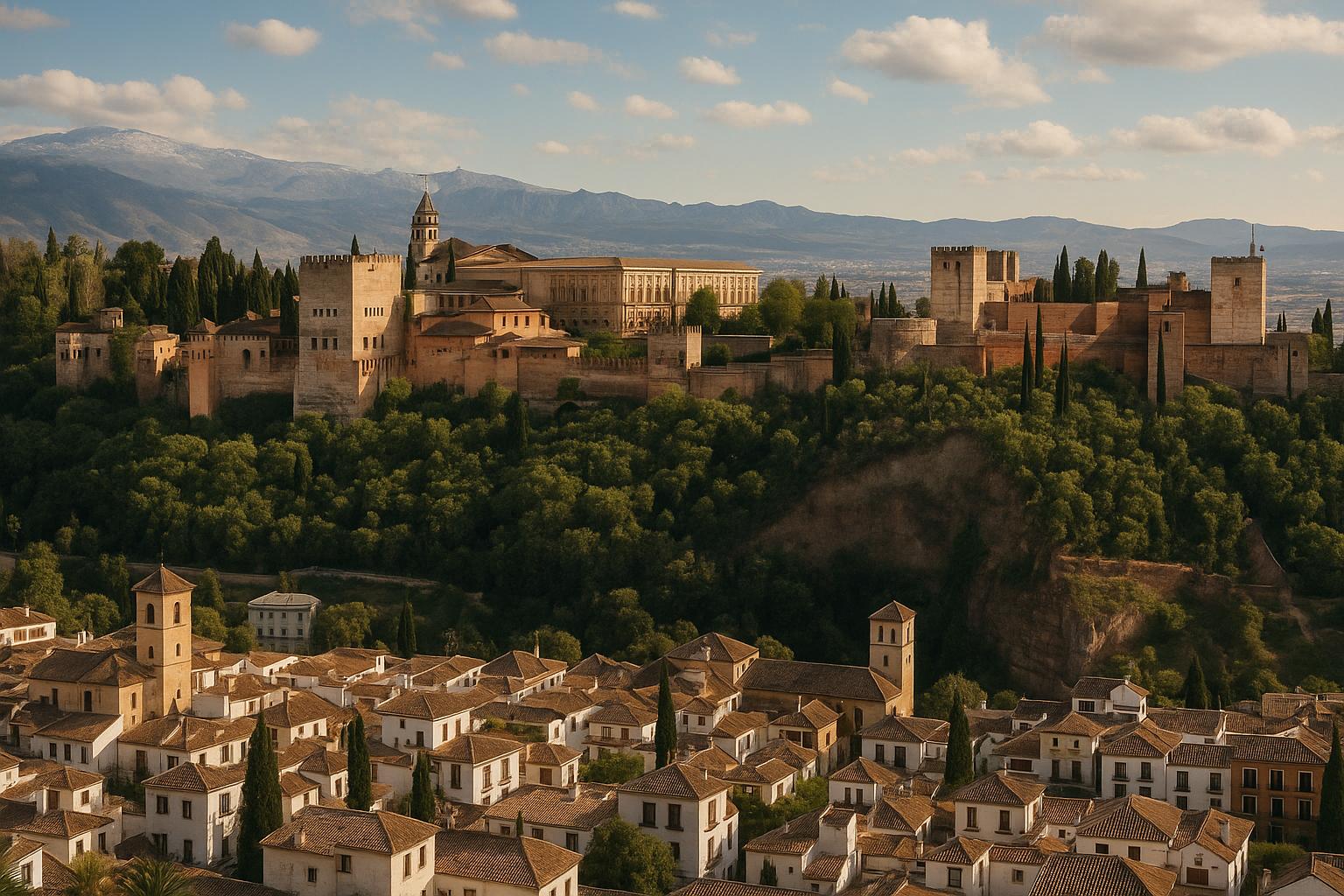Contents
Introduction to Granada
Granada is a city located in the autonomous community of Andalusia, in southern Spain. Renowned for its rich history and stunning architecture, it sits at the foothills of the Sierra Nevada mountains. Granada is perhaps best known for the Alhambra, but its cultural, historical, and geographical significance extends beyond this UNESCO World Heritage site. The city’s unique blend of the ancient and the modern offers visitors a comprehensive experience, encompassing a broad spectrum of sights and activities.
Historical Background
The history of Granada is deeply intertwined with its diverse cultural influences, which include Roman, Visigoth, Muslim, and Christian periods. Originally founded by the Iberians, it rose to prominence under Islamic rule from the 8th to the 15th century. In 1492, Granada was the last Muslim stronghold in Spain to be reclaimed during the Reconquista, a pivotal event in Spanish history. This transformation from an Islamic to a Christian city significantly shaped its cultural and architectural landscape.
The Alhambra
The Alhambra is an iconic symbol of Granada, encompassing palaces, gardens, and fortifications. Built during the mid-13th to 14th centuries by the Nasrid dynasty, it reflects the zenith of Moorish art and architecture in Spain. Known for its intricate carvings, serene courtyards, and critical water features, the Alhambra showcases the sophistication of Islamic architecture. Its design includes structured gardens, lush with fountains that reflect the importance of water in Islamic design. Tickets to visit the Alhambra can be reserved in advance through the official Alhambra website.
Cultural Significance
Granada has a rich cultural tapestry that includes influences from various civilizations that have occupied the city. Flamenco music and dance, traditional Andalusian cuisine, and festivals such as the Semana Santa (Holy Week) are integral to its cultural fabric. Flamenco, in particular, has deep roots in the area, with numerous flamenco bars and venues offering performances that illuminate this vibrant, emotional art form.
University of Granada
Established in 1531, the University of Granada is one of the oldest universities in Spain. It continues to be a vibrant hub for academic pursuits, drawing students and researchers from around the globe. The university contributes significantly to the city’s lively atmosphere and intellectual diversity, adding to Granada’s charm and modern relevance. The student population also fuels a living lab of ideas and innovations that integrate seamlessly with the city’s historic character.
Geographical Features
Granada is strategically located a short drive from the Mediterranean coast and the peaks of the Sierra Nevada mountains, making it a desirable destination for both beachgoers and winter sport enthusiasts alike. The close proximity to diverse landscapes offers ample opportunities for hiking, skiing, and exploring the natural beauty of the region. The juxtaposition of sea and mountains lends itself to numerous outdoor activities that can be enjoyed year-round.
Impact of Earthquakes
Granada’s location near the convergence of the Eurasian and African tectonic plates means that the region is susceptible to seismic activity. Although not as frequent or severe as in other parts of the world, earthquakes occasionally impact the city, reminding its inhabitants of nature’s power. Historical structures, such as those found in the Alhambra and the Albayzín district, have been minimally affected due to consistent monitoring and preservation efforts. Earthquake preparedness and architectural resilience are significant considerations in both construction and urban planning, ensuring that the city remains largely safe for its residents and tourists alike.
Modern-Day Granada
Today, Granada is a bustling city with a blend of historical and modern elements. Despite its historical grandeur, the city embraces modernity through cultural institutions, research centers, and a vibrant nightlife while maintaining its traditional charm. Progressive urban planning, alongside conservation efforts, ensures that modern developments harmoniously integrate with the classical architecture that makes Granada unique. The city’s commitment to sustainability and innovation is evident in various public initiatives aimed at improving quality of life.
Conclusion
Granada is a city that embodies a fascinating intersection of history, culture, and natural beauty. Its architectural marvels, historical narratives, and modern-day vibrancy make it an essential destination in Spain, offering a distinct glimpse into the country’s diverse heritage. Whether you are exploring the majestic Alhambra, wandering the ancient streets of the Albayzín, or experiencing the lively cultural events, Granada provides a rich, multi-dimensional experience that is sure to leave a lasting impression.
